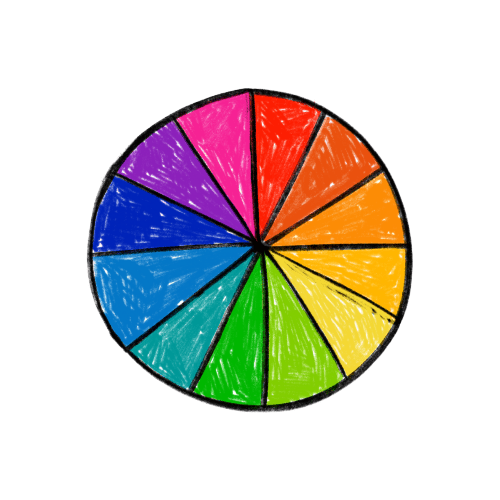

Unleash your Creativity
Explore a world of artistic possibilities with our dedicated Arts and Crafts page. From painting and drawing to paper crafts and DIY projects, these resources are designed to inspire and engage learners of all ages, encouraging them to express themselves and develop new skills while having fun and creating something beautiful.
Click Below to Start Exploring

History of Art
The history of art is a vast and diverse journey spanning centuries and encompassing various cultures and movements. Below is an overview of key periods in the history of art:
Prehistoric Art (c. 30,000 BCE – 3,500 BCE):
- Earliest forms of art found in cave paintings and sculptures.
- Primarily served practical or ritualistic purposes.
Ancient Art (c. 3,500 BCE – 476 CE):
- Mesopotamian, Egyptian, Greek, and Roman civilizations produced significant art.
- Notable for monumental architecture, sculptures, and pottery.
Medieval Art (c. 476 CE – 1400 CE):
- Art influenced by Christianity, characterized by illuminated manuscripts, mosaics, and Gothic architecture.
- Focus on religious themes.
Renaissance (14th – 17th centuries):
- A revival of classical learning, science, and the arts.
- Artists like Leonardo da Vinci, Michelangelo, and Raphael flourished.
- Emphasis on perspective, realism, and humanism.
Baroque (17th – 18th centuries):
- Characterized by grandeur, drama, and rich ornamentation.
- Caravaggio and Rembrandt were prominent Baroque artists.
Neoclassicism (mid-18th – 19th centuries):
- A return to classical themes inspired by ancient Greece and Rome.
- Emphasis on order, clarity, and rationality.
Romanticism (late 18th – mid-19th centuries):
- Emphasis on emotion, imagination, and individualism.
- Artists like William Blake and Eugène Delacroix explored nature and the sublime.
Realism (mid-19th – late 19th centuries):
- Depiction of everyday life and ordinary people.
- Gustave Courbet and Honoré Daumier were key figures.
Impressionism (late 19th century):
- Focus on capturing light and atmosphere.
- Monet, Degas, and Renoir were central to the movement.
Post-Impressionism (late 19th – early 20th centuries):
- Artists explored individual expression and symbolism.
- Van Gogh, Cézanne, and Seurat were influential.
Modern Art (late 19th – mid-20th centuries):
- Artistic experimentation and a break from traditional conventions.
- Movements include Cubism, Fauvism, Surrealism, and Abstract Expressionism.
Contemporary Art (mid-20th century – present):
- Diverse and evolving, reflecting global perspectives.
- Inclusion of new media, conceptual art, and a focus on individual expression.
The history of art is rich and continually evolving, shaped by cultural, social, and technological changes. Different regions and artists have contributed significantly to the global tapestry of artistic expression.
Elements of Art
The elements of art are the basic visual components that artists use to create works of art. These elements form the foundation for understanding and analyzing visual compositions. Here are the key elements of art:
Line:
- A mark with length and direction.
- Can be straight, curved, zigzag, or implied.
Shape:
- A two-dimensional area with defined boundaries.
- Can be geometric (e.g., squares, circles) or organic (irregular and freeform).
Form:
- Three-dimensional and encloses volume.
- Objects with height, width, and depth.
Color:
- Derived from reflected light.
- Has three properties: hue (name of color), value (lightness or darkness), and intensity (brightness or dullness).
Value:
- The lightness or darkness of a color.
- Creates contrast and emphasizes shapes and forms.
Texture:
- The surface quality of an object.
- Can be actual (tactile) or implied (visual).
Space:
- The area around, within, or between objects.
- Defines the positive and negative areas in a composition.
Proportion:
- The relationship between different parts of an artwork.
- Ensures a sense of balance and harmony.
Balance:
- Distribution of visual weight in an artwork.
- Can be symmetrical, asymmetrical, or radial.
Unity:
- The harmonious relationship of elements in a composition.
- Creates a sense of completeness.
Emphasis:
- The focal point or area of importance in an artwork.
- Draws attention and creates visual interest.
Movement:
- The path the viewer’s eye follows through an artwork.
- Can be directed through lines, shapes, or arrangement of elements.
Understanding and manipulating these elements allows artists to convey meaning, create visual impact, and evoke emotions in their work. Artists often experiment with these elements to achieve specific effects and communicate their ideas or emotions effectively.
Recommended Videos for Kindergarteners:
Recommended Videos:
Color Theory
Color theory is a framework that provides guidance on how colors interact, complement each other, and create specific effects when combined. Understanding color theory is crucial for artists, designers, and anyone working with colors. Below are key concepts in color theory:
Primary Colors:
- The three primary colors are red, blue, and yellow.
- These colors cannot be created by mixing other colors.
Secondary Colors:
- Secondary colors are created by mixing two primary colors.
- The secondary colors are green (blue + yellow), orange (red + yellow), and purple (red + blue).
Tertiary Colors:
- Tertiary colors result from mixing a primary color with a neighboring secondary color.
- Examples include red-orange and blue-green.
Color Wheel:
- A circular diagram of colors arranged by their chromatic relationship.
- Helps visualize the relationships between colors.
Complementary Colors:
- Colors opposite each other on the color wheel.
- When used together, they create high contrast and reinforce each other.
Analogous Colors:
- Colors that are next to each other on the color wheel.
- Create harmonious and cohesive color schemes.
Triadic Colors:
- Three colors evenly spaced around the color wheel.
- Provide balance and variety.
Split-Complementary Colors:
- A base color and the two colors adjacent to its complementary color.
- Offers high contrast with less tension than complementary colors.
Monochromatic Colors:
- Different shades and tones of a single color.
- Creates a harmonious and unified look.
Warm and Cool Colors:
- Warm colors (reds, oranges, yellows) evoke warmth and energy.
- Cool colors (blues, greens, purples) convey calmness and serenity.
Saturation:
- The intensity or vividness of a color.
- High saturation results in vibrant colors, while low saturation is more muted.
Value:
- The lightness or darkness of a color.
- Colors with different values create contrast and depth.
Understanding these principles allows artists and designers to make informed choices about color palettes, create visual harmony, and convey specific moods or messages in their work. Experimenting with color combinations and studying the impact of different color schemes enhances one’s mastery of color theory.
Recommended Videos:


More Content Coming Soon
At Brainy and Nimble, we are dedicated to providing comprehensive educational resources. Additional grade levels and enriching content are in the pipeline. Stay tuned for our upcoming additions as we continue to expand our offerings and support learners at every stage of their educational journey.

Please note that this website contains affiliate links, through which I earn a small commission from any purchases made. While it is not mandatory to use these links, your support is always greatly appreciated as these funds help support the maintenance and development of this website.
This commission comes at no additional cost to you.






